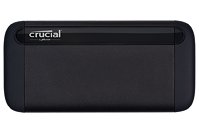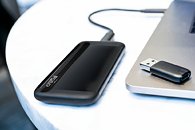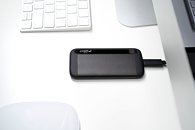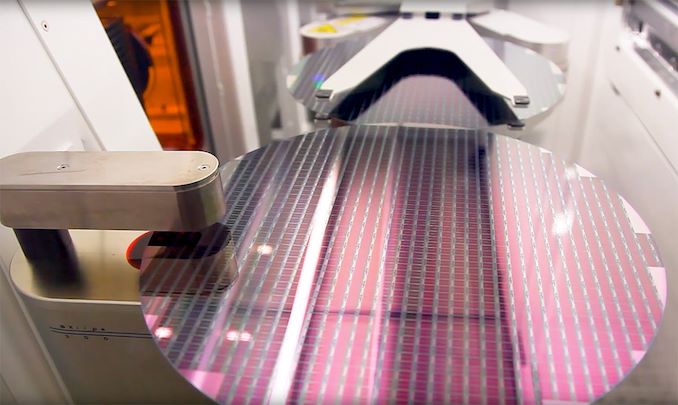- Joined
- Oct 9, 2007
- Messages
- 47,895 (7.38/day)
- Location
- Dublin, Ireland
| System Name | RBMK-1000 |
|---|---|
| Processor | AMD Ryzen 7 5700G |
| Motherboard | Gigabyte B550 AORUS Elite V2 |
| Cooling | DeepCool Gammax L240 V2 |
| Memory | 2x 16GB DDR4-3200 |
| Video Card(s) | Galax RTX 4070 Ti EX |
| Storage | Samsung 990 1TB |
| Display(s) | BenQ 1440p 60 Hz 27-inch |
| Case | Corsair Carbide 100R |
| Audio Device(s) | ASUS SupremeFX S1220A |
| Power Supply | Cooler Master MWE Gold 650W |
| Mouse | ASUS ROG Strix Impact |
| Keyboard | Gamdias Hermes E2 |
| Software | Windows 11 Pro |
Micron's consumer storage solutions arm Crucial unveiled the X8 Portable SSD. The Crucial X8 is a lightweight, portable flash-based storage device that comes in capacities of 500 GB and 1 TB, and offers sequential transfer speeds of up to 1,050 MB/s reads. It leverages USB 3.1 gen 2 (10 Gbps) and UASP, and supports USB type-C. A type-C to type-A adapter is included in the package, but runs the drive at 5 Gbps. The drive requires USB 3.1 and isn't compatible with USB 2.0/1.1. This is because it needs 1.5 A of current, which older generation USB ports typically can't provide. A single cable with USB-C connectors on both ends handles both power and host connectivity.
Under the hood, the X8 is essentially a Crucial P1 M.2 NVMe SSD wired to an ASMedia-made USB-to-PCIe bridge chip. The X8 supports TRIM command if the volume is formatted in NTFS. Out of the box, it comes in a camera-friendly exFAT format with GPT. The drive is hence compatible with PCs (Windows 7 or later and GPT-aware *nix), Macs, the iPad Pro, Chromebooks, and Android devices that have USB 3.1. Although not certified, The Crucial X8 also works with Xbox One and PlayStation 4, and Crucial provides support on how to get the drive to work with these consoles, making it a formidable portable game drive given its sequential read speed. The drive is roughly the size of a 4-inch smartphone, and can survive drops onto carpet up to a height of 7.5 feet (2.28 m). It's not water-resistant. Backed by a 3-year warranty, the 1 TB variant (CT1000X8SSD9) is priced at $164.95, and the 500 GB variant (CT500X8SSD9) at $119.95.



View at TechPowerUp Main Site
Under the hood, the X8 is essentially a Crucial P1 M.2 NVMe SSD wired to an ASMedia-made USB-to-PCIe bridge chip. The X8 supports TRIM command if the volume is formatted in NTFS. Out of the box, it comes in a camera-friendly exFAT format with GPT. The drive is hence compatible with PCs (Windows 7 or later and GPT-aware *nix), Macs, the iPad Pro, Chromebooks, and Android devices that have USB 3.1. Although not certified, The Crucial X8 also works with Xbox One and PlayStation 4, and Crucial provides support on how to get the drive to work with these consoles, making it a formidable portable game drive given its sequential read speed. The drive is roughly the size of a 4-inch smartphone, and can survive drops onto carpet up to a height of 7.5 feet (2.28 m). It's not water-resistant. Backed by a 3-year warranty, the 1 TB variant (CT1000X8SSD9) is priced at $164.95, and the 500 GB variant (CT500X8SSD9) at $119.95.



View at TechPowerUp Main Site





